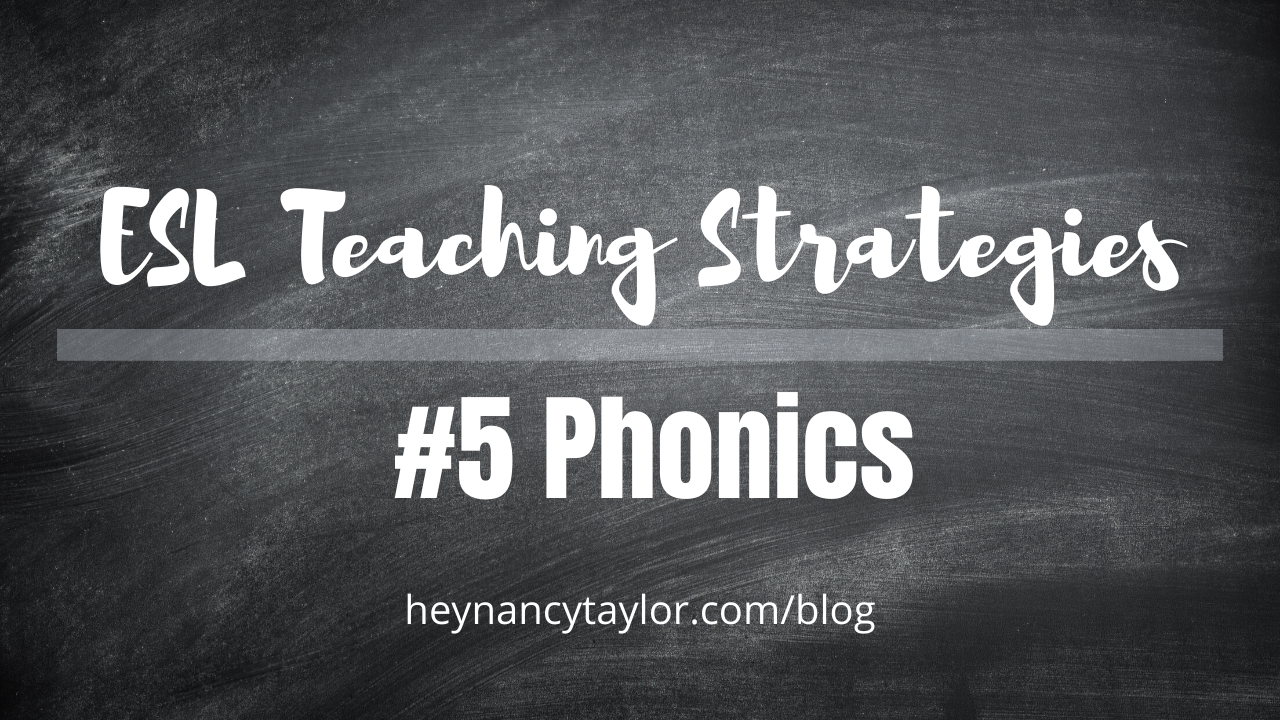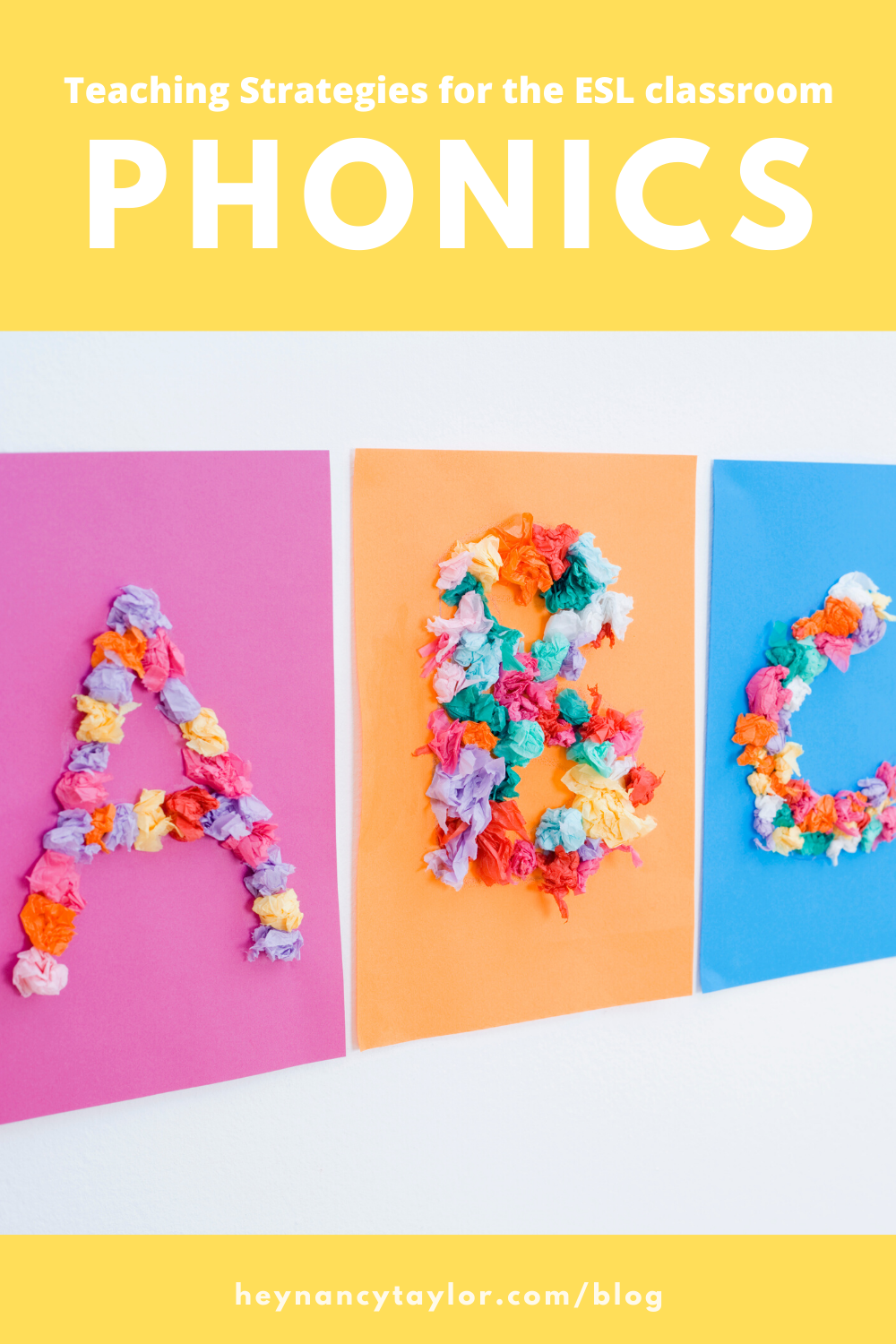ESL Teaching Strategies: #5 Phonics

Attention Online ESL teachers! Time for another teaching strategy to use in your virtual classroom. Today we are talking all about Phonics. In this blog post you will learn the what, why, and how of teaching using phonics.
First off, if you want to see this skill in action, take a look at this video of Nancy (with a cameo of baby Jack) as she shows you exactly how to say and the sounds of each letter of the alphabet.
What are phonics?

Well here is the definition straight from the all-knowing-google-search:
"a method of teaching people to read by correlating sounds with letters or groups of letters in an alphabetic writing system"
Basically it is the sounds associated with each letter. Now if you are like me you may have learned these with the "uh" sound at the end of each sound. For example, T says "tuh". Well when you are teaching an ESL learner the sounds it is much more beneficial to use synthetic phonics
Synthetic phonics, also known as blended phonics or inductive phonics, is a method of teaching English reading which first teaches the letter sounds and then builds up to blending these sounds together to achieve full pronunciation of whole words.
This means we only say the exact sound the letter will make in the word. So NO "uh". Be sure to check out the video to see Nancy say each sound so you can hear the differences and how we are supposed to say them to the student.
Why do we use Synthetic Phonics?

It is important to use the precise sound a letter makes so that the ESL learner can start to associate that sound with the letter when reading. If we add that extra "uh" sound to each sound in the alphabet it can be really confusing.
For example:
The word "MAP"
becomes
muh-ah-puh without synthetic phonics verses mmmm-ahhh-ppp (just air). The students won't add extra sounds which leads itself towards more correct pronunciation.
How do we use Phonics?

First you need to teach the individual sounds in the "rime". The rime is the ending sound of the word. It starts with the vowel and is followed with consonants. We are learning so many new literary terms today, aren't we? Well we aren't done!
Next you teach the Onset sound(s). This is the beginning sound before the rime. Sometimes it's just one letter but sometimes it is a combination of two letters like "th" or "st".
If your student is having trouble repeating the sounds, a good strategy to use is putting your mouth close to the camera so that they can see how to make the same shapes with their own mouth to create the sound. It can often be difficult for students to interpret the differences in sounds, especially with online teaching so don't be afraid to get up close and personal with the camera.

Here is an example of using Phonics in the Classroom...
Teaching the rime "eg" with the onsets "s" "l" "m"
First teach "e" then "g". Next teach them together "eg" "eg" "eg".
Next teach the individual sounds "s", "l", "m" And blend the onset sounds with the rime.
Hooray! You got your student to read using synthetic Phonics! Nice Work!
I hope you find this strategy helpful as you teach your ESL students in the online classroom. If you are looking for more strategies, be sure to check out these posts.
Happy Teaching!







